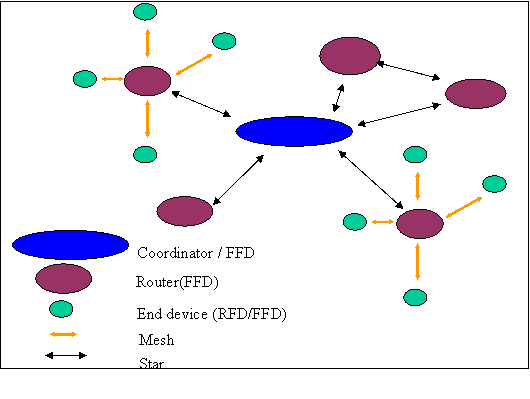You are here
Network Model
The functions of the Coordinator, which usually remains in the receptive mode, encompass network set-up, beacon transmission, node management, storage of node information and message routing between nodes.
The network node, however, is meant to save energy (and so ‘sleeps' for long periods) and its functions include searching for network availability, data transfer, checks for pending data and queries for data from the coordinator.

Figure 1: ZigBee Network Model [ZigBee: 'Wireless Control That Simply Works']
For the sake of simplicity without jeopardising robustness, this particular IEEE standard defines a quartet frame structure and a super-frame structure used optionally only by the coordinator.
The four frame structures are
- Beacon frame for transmission of beacons
- Data frame for all data transfers
- Acknowledgement frame for successful frame receipt confirmations
- MAC command frame
These frame structures and the coordinator's super-frame structure play critical roles in security of data and integrity in transmission.
All protocol layers contribute headers and footers to the frame structure, such that the total overheads for each data packet range are from 15 octets (for short addresses) to 31 octets (for 64-bit addresses).
The coordinator lays down the format for the super-frame for sending beacons after every 15.38 ms or/and multiples thereof, up to 252s. This interval is determined a priori and the coordinator thus enables sixteen time slots of identical width between beacons so that channel access is contention-less. Within each time slot, access is contention-based. Nonetheless, the coordinator provides as many as seven GTS (guaranteed time slots) for every beacon interval to ensure better quality.
